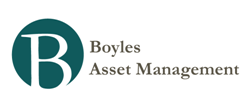2009 Chou Funds Semi-Annual Report
CONSTANT MATURITY SWAPS: With world governments flooding the system with liquidity and keeping interest rates unduly low, we wonder what financial instruments we can use that will protect us if inflation takes hold. We want an instrument similar to an insurance policy whereby the most we could lose is the amount of premium we pay upfront but get all the upside if the interest rate rises. We have identified two such instruments: Constant Maturity Swap Rate Caps (CMS RC) and Constant Maturity Swap Curve Caps (CMS CC).
…
HOW CMS RATE CAP WORKS: In simple terms, without going into the technical aspect of the transaction, let us assume that we think the 10-year U.S. Treasury will rise above 5.2% in three years (between now and 2012). The cost to buy that time option premium is roughly 100 basis points or 1.0%. Our break-even point is 6.2%. In essence, CMS Rate Caps are options to protect against rising interest rates and the most we can lose is the time option premium of 1.0%. On a notional amount of $10 million, the cost of the time option premium is $100,000 and every basis point increase above 6.2% translates into gains of approximately $1,000.
HOW CMS CURVE CAP WORKS: With a CMS Curve Cap we are assuming that the spread between short-term and long-term interest rates will widen in the future. For example, the current spread between 2-year Treasury and 10-year Treasury on the curve cap is 100 basis points. If we assume this spread will widen in three years (between now and 2012), we can buy a time option premium for 50 basis points or 0.5% that will expire in three years. We break-even when the spread exceeds 150 points; the most we can lose is the time option premium of 0.5%. On a notional amount of $10 million, the cost of the time option premium is $50,000; for every basis point the spread widens over 150 points, we would gain approximately $1,000.
The negatives are counterparty risk and, like insurance, the option premium that has been paid erodes over time and may expire worthless.
We do not intend to buy the CMSs right away. This instrument is attractive when every one is concerned about Depression, the government is providing all kinds of liquidity, interest rates are low and the time option premium for the CMSs is selling at a very low price relative to the dangers of inflation.
- Recent Transaction
Yesterday I sold another call option on some of my shares of HAL, my ESPP shares. I'm currently way overweight my employer's stock. I have just over 184 shares from the first purchase that went through that has already reached LTCG treatment...
- Selling Puts For Added Income
This morning Archer-Daniels Midland was trading at $26.97. Since I would like to get more into the stock with it trading around a 14% discount to my calculated fair value, I figured I would check out the potential option moves to make. The fair value...
- Recent Transaction
On Tuesday, I decided to sell another put option on Intel. This time it was a $26 September 22, 2012 Put Option for $0.48. After commission I netted a $40.01 option premium. Here's how the option can play out. (1) Option expires - I received $40.01...
- Recent Transaction
Yesterday I sold another put option on Intel. I sold the $25 17 Aug 2012 put for $0.46. Less commission I received a total of $38.01 in premium for a total return of 1.52% which is annualized to 21.75%. I figured that since I want to add to my Intel position...
- Recent Transactions
Today I sold 2 option contracts in an attempt to add some more income. The first contract that I sold was the BAC Jan 18 2014 $7 Put for $1.73. If the option gets exercised then my cost basis for this transaction will be $5.27. If the option expires then...

